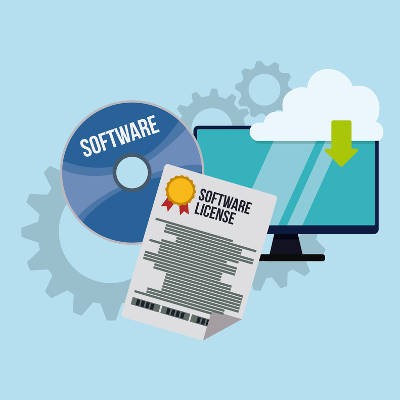FRS Pros Blog
Your operations are, more or less, contingent on your budget. As such, your business will rely on its budget to guide it fiscally through the next year of operation. Unfortunately, IT resources care little about your budget, and you can see this in how unpredictable it can be. We’ll discuss ways that you can keep your IT budget from breaking the bank, as well as how you can improve success over time through proper management of your IT assets.
You serve as a vendor to your clients, providing them with a necessary good or service. Likewise, you have vendors that provide you with the goods and services that enable you to do so. However, how well are your vendors managed?
Businesses of all sizes use varying degrees of technology to improve organizational productivity, efficiency, and security. The more a business depends on its data, the more crucial it is for them to manage and maintain the systems in which this data is dependent. For organizations that have a lack of financial resources to support these systems, it is often left to unqualified employees, putting your business at risk. What do you do when you need expertise that you lack and can’t afford to hire in-house staff?
There is no question that a small business can benefit from technology, as has been proven time and time again. However, an issue can arise if a business bites off more than it can chew, so to speak, and ultimately creates a spike in costs. A responsible business owner will resist this temptation and prioritize the solutions they need over the ones they want - building profitability and generating capital needed to make other improvements.
If you don’t consider the worst-case scenario when preparing your business’ disaster recovery strategy, you’ll inevitably suffer from it when it does happen. Taking into account all of these nuances is one of the main ways your organization can prepare for such an occasion. All of these instances need to be considered when putting together your organization’s business continuity plan. We’ll discuss some of the major parts of it, and why they are crucial.
Chances are, you most likely view your vendors as a necessary evil. While you have to work with them to get the things that your business needs to function, it’s hard to not think of everything else that could be accomplished in the time you spend dealing with them. Unfortunately, there are even more costs to dealing with vendors that you may not have considered.
No matter how you look at it, technology is expensive. You’ll rarely look at your IT invoices without cringing a little on the inside. However, it’s important that you take a glance at these every once in a while to understand just what you’re getting from your technology budget. Ultimately, you want to ensure that your IT purchases are yielding a positive return on investment, and therefore, providing value for your organization.
There are a few sounds that are familiar to any office: keys clacking away, coffee being sipped (or slurped), and the rattling, squawking hum of the printer. Yet this image presents a crucial question: do you know how much your printer is costing your business each time it is used? In today’s blog, we’ll review how you can calculate this investment.
How does your business leverage data backup? Depending on the way your business functions and your specific needs, your data backup solution will vary from other organizations in your industry. Yet, one thing is absolutely certain, and it’s that your organization can’t afford to not implement some type of data backup system. In the event of a data loss scenario, you won’t want to be left wondering if you could have prevented it with a little proactive action.
An IT project manager is an important part of any new technology initiative in your workplace. Therefore, you should be looking for specific requirements when finding a project manager for your latest project implementation. Here are some specific traits that your business should look for in an IT project manager.
One experience that almost everyone has been involved in is the clashing of personalities. This is only natural, as different people are born with different predispositions and are raised in differing environments. However, in the business world, one should do their best to keep personal differences from affecting the professional relationships they form.
Your business either has a sound plan to manage its IT maintenance, or it does not. There is no middle ground here. Either you have an internal team dedicated to maintaining your IT infrastructure, or it’s not being taken care of as well as it should be. Even if you do have an internal team, you might notice that they simply don’t have time on their hands to handle all of their responsibilities. We’re here to introduce you to one of the most notable ways of keeping your technology in proper working order: managed IT services.
How does your organization manage its mission-critical technology solutions? We know that most small businesses have some sort of trouble with this topic, either due to budget constraints or a lack of personnel. Either way, we know that there is a better way to manage your business’ technology, and it’s all thanks to managed IT services.
In order for small businesses to remain competitive in this economy, there has to be the opportunity for them to participate as a viable competitor. This is the goal of a United States bill that has passed through the House of Representatives and is moving forward to be voted on by the Senate.
Google is taking steps to protect the data of a small group of its users who run the highest risk of experiencing a data breach or hack. This new service, the Advance Protection Program, shows promise in protecting the information that these select few can access.
It should come as no surprise that the practice of business continuity planning is one that every business needs to undergo. This planning serves as essentially your only insurance against some form of data disaster or another. Consider your own business for a moment--could it survive a fire, a critical failure in part of your infrastructure, or theft? With a business continuity plan, there’s a chance it just might.
Let’s say that you have an employee who wants to do some good for your business and save your IT some cash on a piece of business software. They find a “free” version of it on the Internet, thinking they have found you a bargain deal. Little do you know that there is an agency out there that’s specifically looking for businesses like yours that don’t keep track of their software licensing, just to make a quick buck off of copyright infringement.
As a business owner, you expect to stay in control of what your business does. Unfortunately, there are certain variables in running a business that simply can’t be controlled, like the weather. Therefore, you need to take special care to ensure that these uncontrollable instances don’t become a threat to your business’ prolonged existence. To this end, we recommend a business continuity plan.
As one would expect, a business will run a lot more smoothly when its employees have the resources to work cohesively toward a common goal. This is why collaborative solutions are becoming a staple in many office environments. Today, we’ll examine how one of these solutions, Microsoft Office 365, can help a workforce to achieve its goals.






















